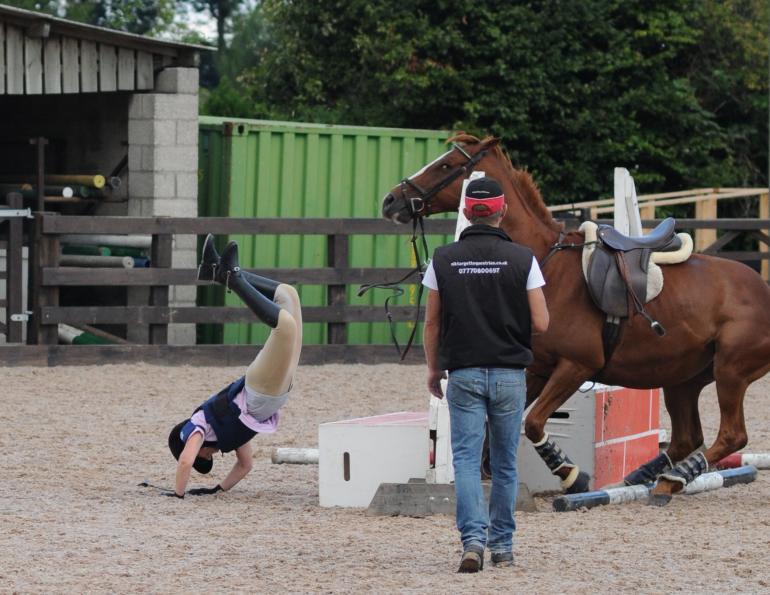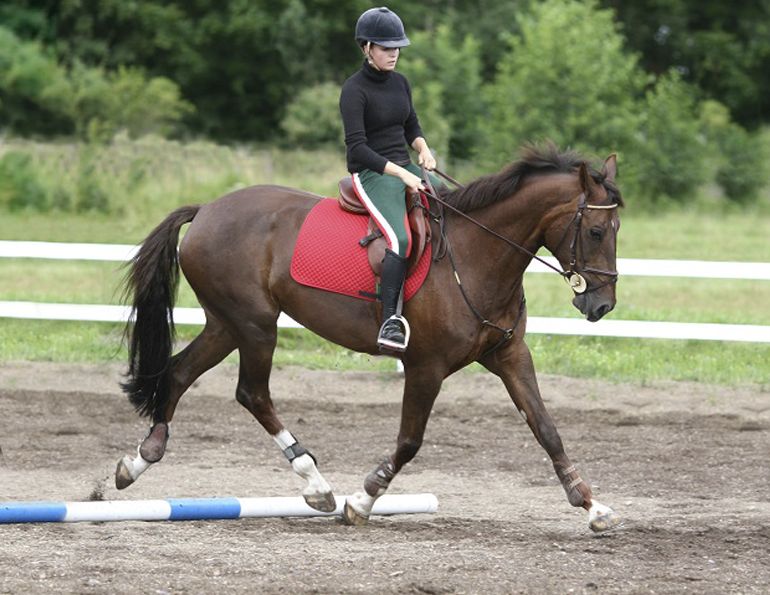By Equine Guelph
There are many reasons, or rather, excuses for not wearing riding helmets. Yet research shows that a properly fitted, safety-approved riding helmet can drastically reduce the risk of head injury.
When a rider falls, the head is usually the first thing to impact the ground. The human skull can be shattered on impacts of 7 to 10 kilometers per hour, and horses gallop at over 60 kph. According to the Brain Injury Alliance of Kentucky, three out of every five equestrian accident deaths are caused by brain injuries, and there is four times the risk of mortality for non-helmeted riders who become injured. Horses are responsible for more than half of all injuries caused by large animals and approximately one-third of those are brain or head injuries.
With that in mind, below are 11 common reasons for not wearing a riding helmet. You only have one brain so don’t use these excuses – wear a helmet every ride.
1. I wear my bike helmet. Bike helmets are made for bike riders. Helmets for horseback riders are designed to withstand falls from higher heights and faster speeds, and kicks from a horse.
2. Helmets are ugly. There are many different styles and colours available, and you can always put a cool cover over top.
3. I’ll be penalized in the show ring. While this is still true in some disciplines, some horse events require helmets and other riskier sports such as hockey, football, and car racing routinely demand helmets. Help change the laws – it can be done with enough pressure from participants.
Related: Therapeutic Tools Top Riders Can't Live Without
4. Western riders don’t wear helmets. The “real” cowboys dressed for protection. They wore sturdy boots, chaps to protect their legs, had stirrup covers to protect their feet, wore gloves, and used bandanas against trail dust. If helmets had been available then, REAL cowboys would’ve worn them. Today, Western helmets are available.
5. Helmets are uncomfortable. While this is true of the old style helmets, designs and materials have changed and are constantly improving. Most of the complaints can be avoided with proper fitting and selecting the best style for you.
6. Helmets are hot. Today’s riding helmets are made of lighter materials than those of yesteryear, and many feature ventilation for air flow. On a hot day, they will be hotter than going without a helmet, but better a hot head than brain damage.
Photo: S. Carter/Flickr
7. Helmets give me a headache. If your helmet fits properly, this complaint could be less about the helmet and more about lack of water intake that causes the headaches. Equestrian activities can be strenuous and most riders don’t drink enough water.
8. I’ll get “helmet hair.” Yes, you might. “Helmet hair” may be unflattering, but is your vanity worth risking brain damage?
9. I’m an experienced rider. A study conducted in Alberta found that injured riders had an average of 27 years of experience. New riders were safer, perhaps because they were more cautious.
10. It’s my head and I can do what I want with it. Yes, it is your head. The message you are sending to everyone around you is that safety is not important. If you require your children to wear a helmet and you don’t, you are sending the message that once they are adults it’s okay to risk their lives in this way. Before you decide that wearing a helmet is not for you, think it through. Your head is like a watermelon. Try dropping one from eight feet in the air and you will get a pretty good idea what can happen to your head. When you break your head, what trauma will you inflict on the person who comes to your rescue? What trauma and hardship will you inflict on your family? Who is going to take care of you for the rest of your life if you severely damage your brain?
11. Helmets are expensive and I can’t afford one. Set down your $5 café latte and think about that statement for a moment. The cost of an ASTM/SEI approved helmet is miniscule compared to the value of your brain. And compared to the cost of long-term health care should a riding accident leave you with permanent brain damage that could have been reduced or avoided by wearing a helmet, they are priceless.
Related: Negotiating Risk: The Use & Enforceability of Waivers
Related: How to Fall off a Horse
Reprinted with the kind permission of Equine Guelph.
Main photo:Steven Lilley/Flickr




























